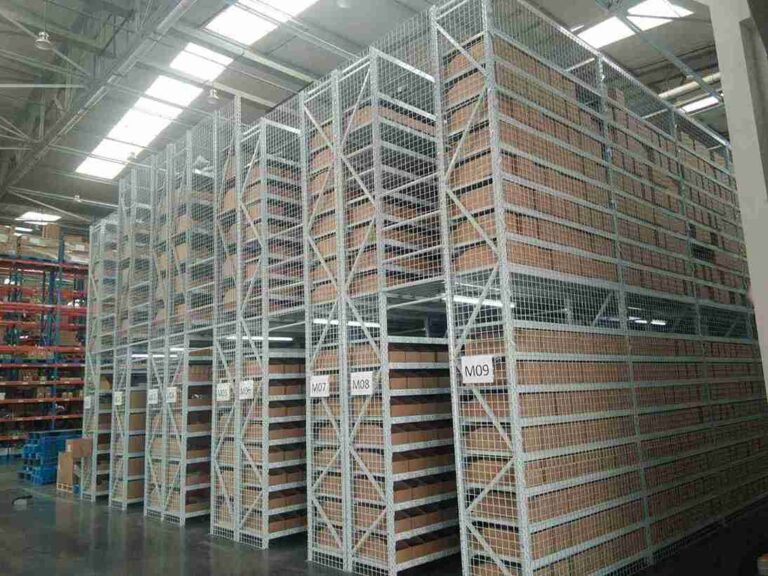📐 "First 50 Enterprise Queries Get Custom 3D Warehouse Design" Plan

Introduction: The Critical Need for Seismic Safety in Pallet Racking Systems
In warehouses and distribution centers, narrow aisle pallet racking maximizes storage density—but without proper seismic safety for pallet racking, these systems can become deadly liabilities during an earthquake.
Collapses due to inadequate seismic safety for pallet racking have led to:
- Catastrophic inventory loss (millions in damages)
- Worker injuries and fatalities
- Extended operational downtime
This guide dives deep into seismic safety for pallet racking, covering engineering standards, reinforcement techniques, real-world case studies, and compliance strategies to ensure warehouses remain operational and safe.

H1: Why Seismic Safety for Pallet Racking is Non-Negotiable
H2: The Physics of Earthquakes and Racking Collapse Risks
Seismic safety for pallet racking isn’t just about compliance—it’s about physics. Earthquakes generate lateral (side-to-side) and vertical (up-and-down) forces, which can:
- Overturn unsecured uprights
- Shear baseplate anchors
- Cause progressive collapse if one bay fails
Narrow aisle racking is especially vulnerable because:
✔ Taller heights = greater sway risk
✔ Tighter aisles = less room for deflection
✔ Heavier top loads = higher center of gravity
H2: Legal and Insurance Implications of Ignoring Seismic Safety for Pallet Racking
- OSHA and IBC regulations require seismic reinforcement in high-risk zones.
- Insurance companies may deny claims if racking wasn’t retrofitted to seismic safety for pallet racking standards.
- Workers’ compensation lawsuits spike when injuries occur from preventable collapses.
H1: Seismic Safety for Pallet Racking: Compliance with International Standards
H2: RMI ANSI MH16.1 – The Gold Standard for Seismic Safety for Pallet Racking
The Rack Manufacturers Institute (RMI) sets the benchmark for seismic safety for pallet racking, including:
- Minimum baseplate thickness (≥3/8″ in high-risk zones)
- Anchorage pull-out resistance requirements
- Lateral force distribution calculations
H2: IBC & FEMA Guidelines for Warehouse Seismic Safety
- International Building Code (IBC) Chapter 13 mandates seismic safety for pallet racking in regions with moderate-to-high earthquake risk.
- FEMA E-74 provides retrofit guidelines for existing racking systems.
H2: How to Determine Your Facility’s Seismic Risk Level
- USGS Earthquake Hazard Maps classify zones from 0 (low risk) to 4 (extreme risk).
- California, Japan, Chile, and New Zealand require the strictest seismic safety for pallet racking measures.
H1: Engineering Solutions for Seismic Safety in Pallet Racking
H2: 1. Baseplate Anchoring – The First Line of Defense
- Epoxy-injected anchors outperform wedge anchors in seismic safety for pallet racking (tested to withstand 3,000+ lbs of pull force).
- Seismic footplates distribute forces across a wider area, reducing uplift risk.
H2: 2. Cross-Aisle and Down-Aisle Bracing Systems
- X-bracing reduces lateral movement by up to 40%.
- Moment frames (used in California warehouses) add rigidity without sacrificing accessibility.
H2: 3. Upright Frame Reinforcements for High-Seismic Zones
- 12-gauge steel uprights resist bending better than standard 14-gauge.
- Double-column designs are mandatory in seismic safety for pallet racking zones 3 and 4.
H2: 4. Load Management for Seismic Stability
- Top-heavy loads are a leading cause of collapse—follow the 20% rule (no more than 20% of capacity above 10 ft).
- Wire mesh decking and pallet stops prevent load shifting during tremors.
H1: Advanced Technologies for Seismic Safety in Pallet Racking
H2: Seismic Dampers – The Future of Racking Safety
- Hydraulic dampers (like those used in skyscrapers) absorb and dissipate energy.
- Friction pendulum systems allow controlled movement without collapse.
H2: Smart Sensors for Real-Time Seismic Monitoring
- Accelerometers detect ground motion and trigger emergency protocols.
- Automated forklift lockdowns prevent accidents during quakes.
H1: Maintenance & Inspection for Long-Term Seismic Safety
H2: Quarterly Seismic Safety Audits for Pallet Racking
- Laser alignment checks for upright deflection.
- Torque tests on anchor bolts (minimum 50 ft-lbs required).
H2: Post-Earthquake Inspection Checklist
- Immediately evacuate and shut down operations.
- Check for:
- Bent or cracked uprights
- Loose or sheared anchors
- Misaligned beams
- Never reuse damaged components—replace them immediately.
H1: Case Study: Seismic Safety for Pallet Racking in Action
A Los Angeles e-commerce warehouse retrofitted its narrow aisle racking with:
- Epoxy anchors + moment frames
- Seismic dampers
Result: Zero damage during a 6.0 quake, while competitors faced weeks of downtime.
Conclusion: Don’t Wait for Disaster – Act Now on Seismic Safety for Pallet Racking
Earthquakes are inevitable—racking collapses aren’t. By implementing seismic safety for pallet racking best practices, warehouses can:
✔ Protect workers
✔ Avoid millions in losses
✔ Stay operational post-disaster
Need a seismic retrofit? Contact our engineers for a free racking assessment.
FAQs
1. How much does seismic retrofitting cost per pallet rack bay?
Expect 2,500 per bay, depending on seismic zone and rack height.
2. Can existing racking be upgraded for seismic safety, or is replacement needed?
Most systems can be retrofitted with braces, anchors, and dampers—full replacement is rare.
3. What’s the ROI on seismic safety for pallet racking upgrades?
- Insurance discounts up to 15%
- Avoiding $500K+ in collapse-related losses
4. Do seismic reinforcements reduce storage capacity?
Minimal impact—cross-bracing may slightly reduce accessibility, but capacity stays the same.
5. How often should seismic anchors be re-torqued?
Every 12 months in Zone 2+, every 6 months in Zone 4.




